The ASUS Z370-I Gaming Review: Mini-Me Mega Motherboard
by Joe Shields on May 21, 2018 11:00 AM EST- Posted in
- Motherboards
- Intel
- Mini ITX
- Asus
- Coffee Lake
- Z370
- Z370-I Gaming
BIOS
The ASUS Z370-I Gaming motherboard has the same BIOS look at setup as we saw in the Z370 Apex review. It uses the 'ROG Red' background with the data being presented on a grey background with white and yellow writing. Like most motherboards, this board starts with the EZ Mode.
EZ Mode presents users with an informative dashboard displaying high-level system information. Included in this panel is the status of the memory, SATA information, installed CPU and BIOS, as well as fan information and temperature and voltage of the CPU. Users are also able to switch boot priority and enabled EZ System Tuning from here as well.
When switching over to advanced mode, users will find themselves at the AI iTweaker screen. To the left of Ai Tweaker is the Main tab (above). That header contains some more information about the BIOS and Processor and allows the system language to be changed.
The AI Tweaker section is where users will find the options to overclock the installed CPU as well as make changes to memory speed/timings, power saving features and other details of the processor and memory. The BIOS offers users option to push the CPU or memory to the limit. About the only things I note are missing here are the more extreme overclocking profiles that were provided with the Apex, if only because the Apex is the bigger overclocking focused cousin. That said, this is a Mini-ITX board so I can't imagine anyone expects those to be included either.
The Advanced section of the BIOS displays a plethora of sub-headings underneath. Each section allows for control over something different. From the CPU and storage configuration to the configuration of the onboard devices such as audio and USB controllers, Wi-Fi, LAN, all board level functionality can be found here.
The Monitor section displays temperatures, fan speeds, and voltages of the system. Within this section is where we are able to find the Q-Fan settings which will test the fans/pump attached to the headers to determine their range and allow to set custom profiles accordingly.
The Boot section contains options for booting such as hard drive priority, boot override options, and fast boot (enabled by default).
The Tool section contains functions to reset your BIOS in the ASUS EZ Flash 3 Utility, save overclocking profiles, as well as gather DRAM SPD and Graphics card information. ASUS also includes Secure Erase functionality to wipe your SSD's out and bring them back to that factory fresh feeling.
Software
Each retail motherboard will come with a driver disk which includes the drivers to get thesystem up and running smoothly. These disks also include other utility type applications from the board partner, for example, RamCache, Cloning, and other utilities.
The picture above is of the driver section. We are able to see the shot was taken after everything was installed. The screen is pretty information showing the status of said software, the available version (on the disk) as well as the installed version. It also tells users if said installation will require a restart.
While the installation disks do have what is needed to get going, the files can be outdated depending on when the moterboard was purchased. To that end, ASUS has an EZ Update application which will search the ASUS website for updated drivers and get them installed on the system.
ASUS' AISuite software is a Windows based solution designed to monitor and control the system. The top portion of the window will change depending on which section is selected. Users are able to choose from a few different sections rach with their own distinct function. For example, the TPU section is for overclocking, EPU for power management, and FanExpert 4 to control system cooling. Overall it is a comprehensive suite and a good tool to use in conjunction with the system BIOS.
RGB lighting has made its way into just about every peripheral we can attach to our PCs. ASUS' uses its Aura software to to setup and configure the RGB LEDs on the board as well as any attached on the headers. There are several preset modes to choose from as well as being able to work by temperature or with music.
ASUS uses a tweaked version of the popular Realtek ALC1220 codec on the Z370-I Gaming, and as such we see a ROG themed version of the Realtek software. Between this and Sonic Studio 3 software, users are able to control all aspects of the audio from levels to surround sound.


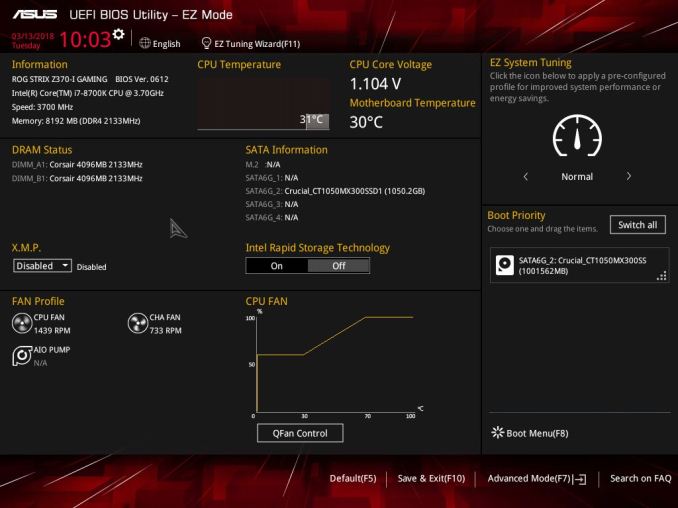
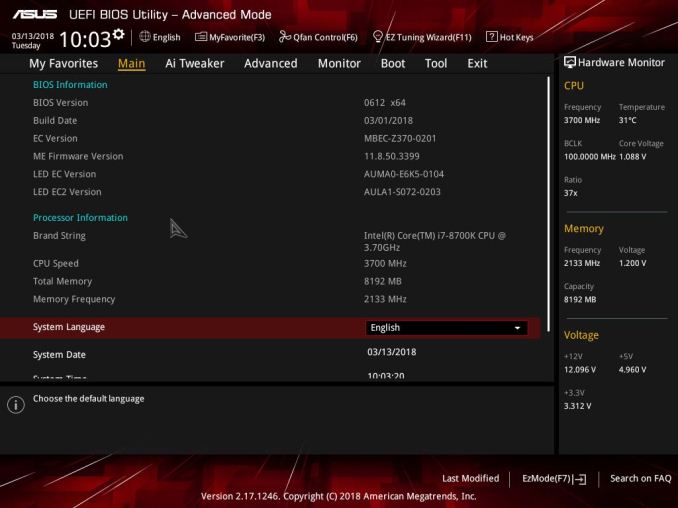

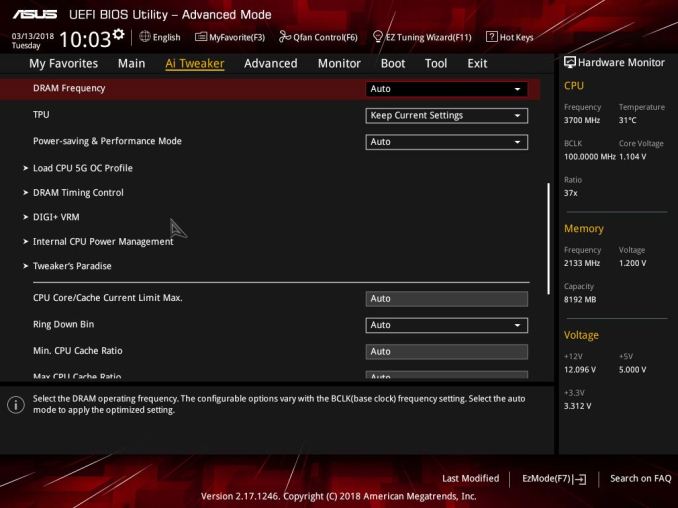
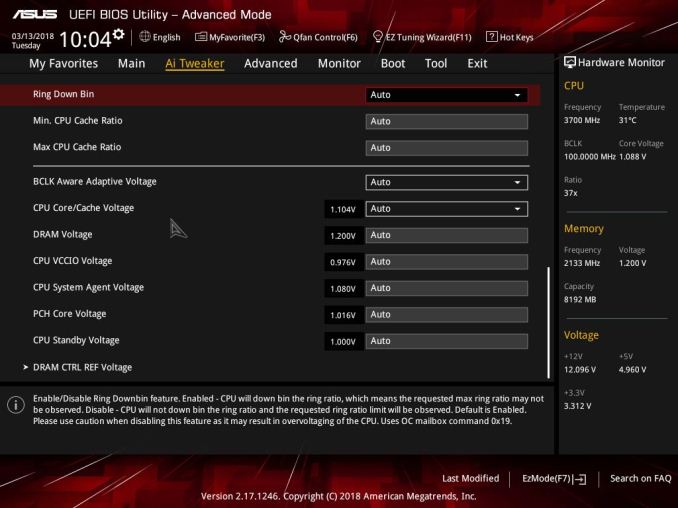
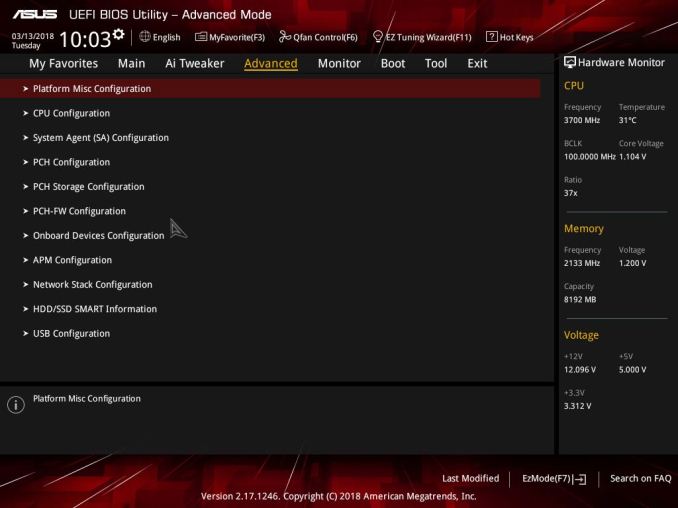
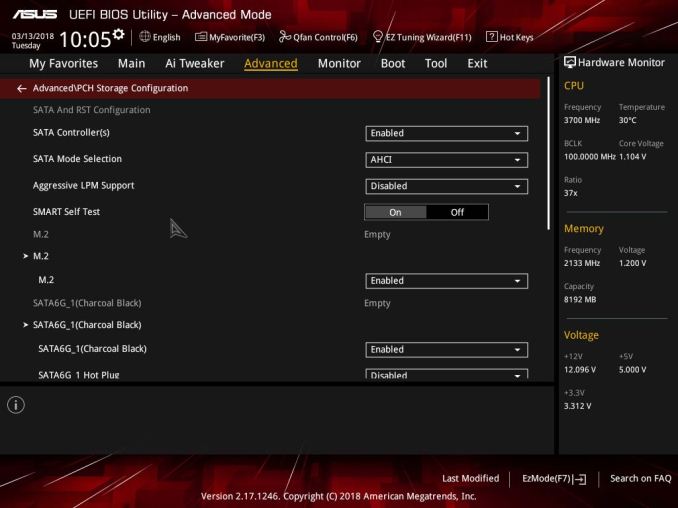
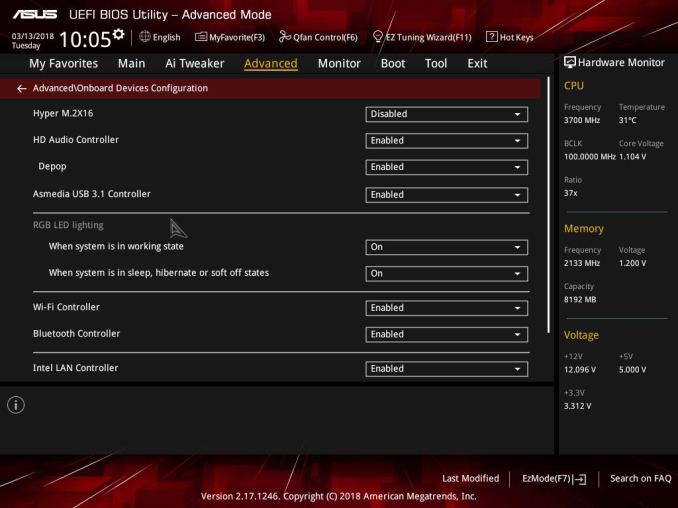
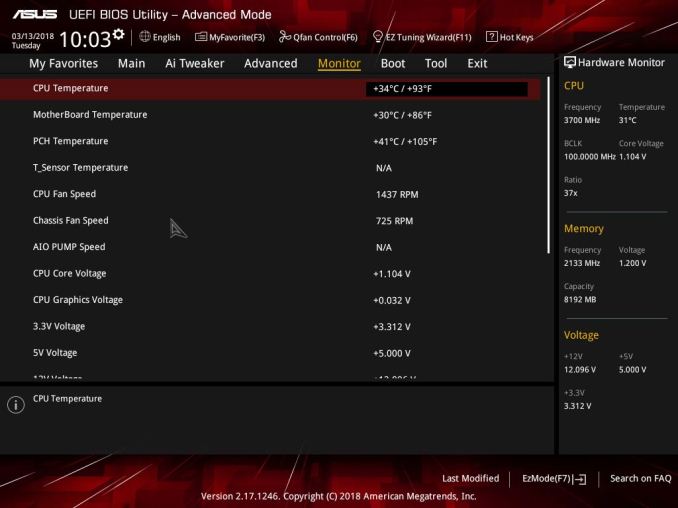
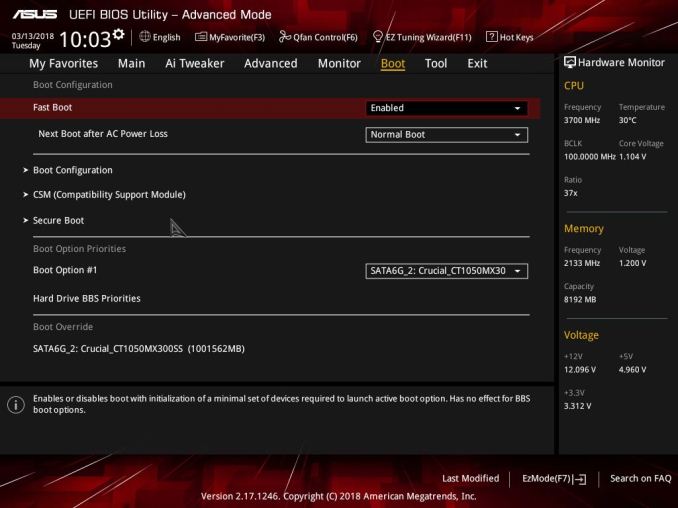







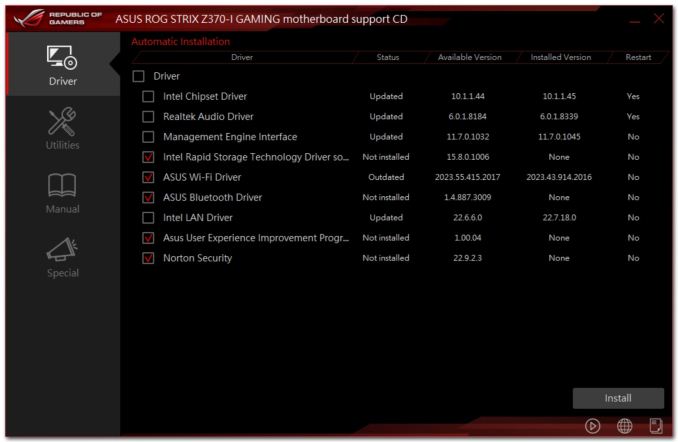

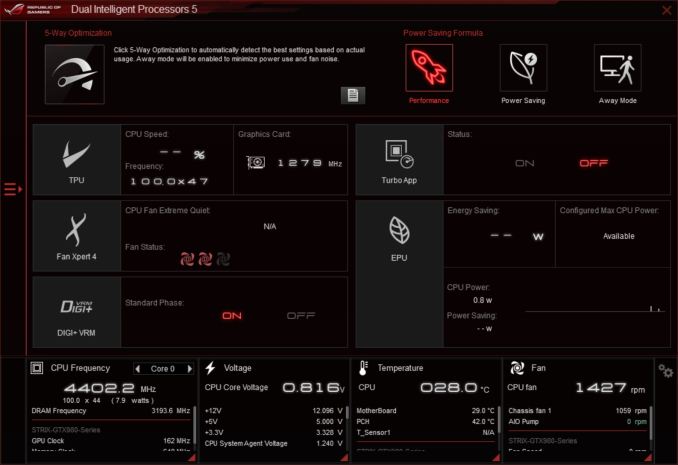
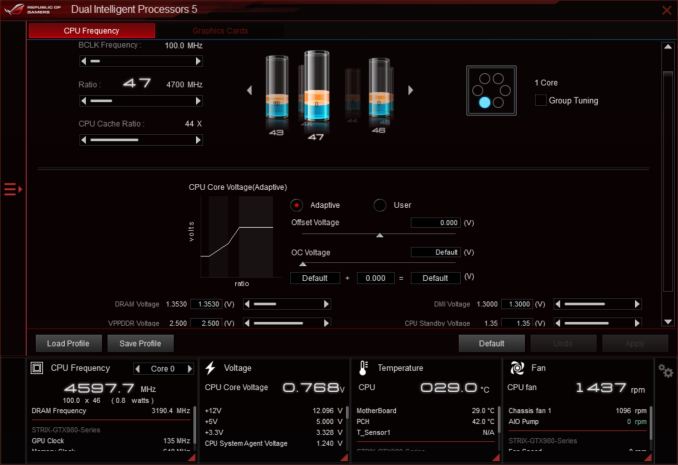
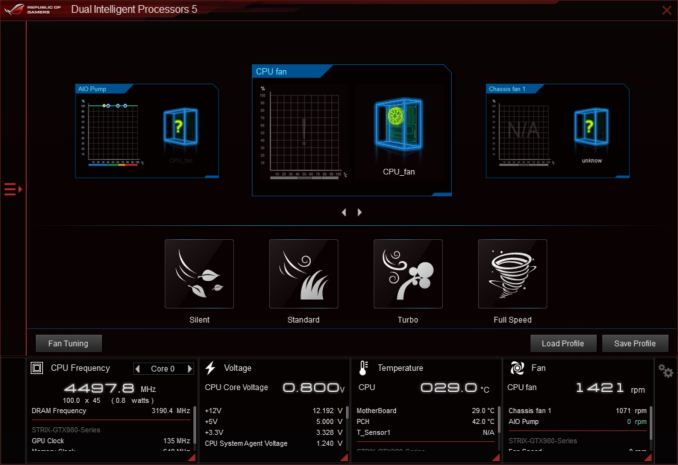
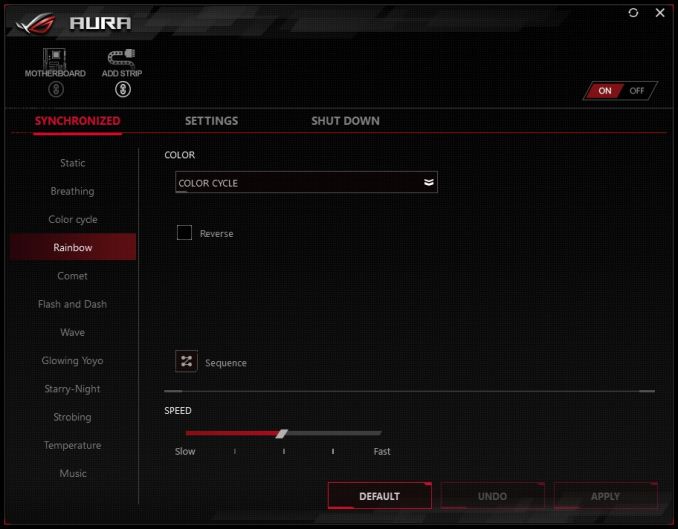
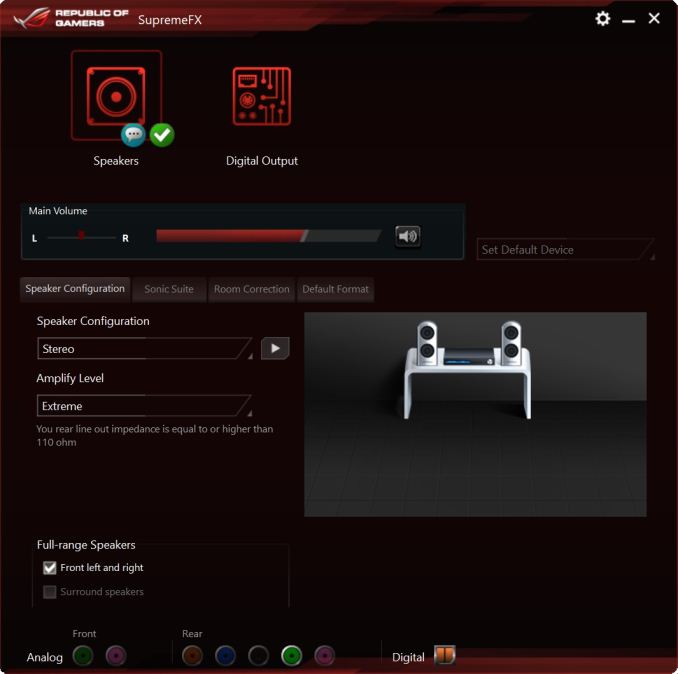














37 Comments
View All Comments
Chaitanya - Monday, May 21, 2018 - link
Price premium for the compact build just doesnt justify the cooling compromises that mini-ITX brings to the table especially for people living in hot climatic regions of the globe where ambient temps can cross 40Deg C.jordanclock - Monday, May 21, 2018 - link
And...? So this one product might not be suitable for people using tiny air cooled cases in warm places? And who are you to say what is and isn't justified for different people? Liquid cooling pretty much negates the space issues. Also a mini-ITX board does not need to be used in a mini-ITX case.tarqsharq - Monday, May 21, 2018 - link
Yeah, it seems odd to complain about cooling problems when you're already at 104F... might want to invest in AC at that point or just get a massive case with tons of fans, not conducive to ITX at all!MDD1963 - Monday, May 21, 2018 - link
"Also a mini-ITX board does not need to be used in a mini-ITX case."I'm sure there's at least one tard looking to stuff one into Corsairs largest ATX doublewide case right now....
meacupla - Tuesday, May 22, 2018 - link
Do you mean the Obsidian 1000D? Because that case has room for an E-ATX and mITXSamus - Thursday, May 24, 2018 - link
Haha that's exactly what I was thinking. Dual PC's in a PC!Joe Shields - Monday, May 21, 2018 - link
I'm not sure what one has to do with the other. One isn't paying a premium for the cooling, or less of it - that simply comes with the territory of the Mini-ITX board in general.Clearly, if one is living in such an area where your inside temperature is 40C, additional cooling considerations are likely warranted, almost regardless of the build size. I do not understand the root of that comment...
Chaitanya - Monday, May 21, 2018 - link
One of the main selling point of Mini-Itx motherboards is smaller and compact PC builds and thats how both motherboard and case manufacturers have been marketing it. So if you want to take full advantage of smaller system then going the route of smaller Mini-Itx cases is necessary which means a restriction on size of cooler that can be used. And using tower style Itx cases defeats the purpose as one can easily go to micro Atx form factor without increasing the volume of pc case too much.Ratman6161 - Monday, May 21, 2018 - link
I guess we can, or at least should, agree that there isn't a one size fits all and that Mini-ITX in general falls into the "not for everybody" category. Then again, If I built my wife a system in a mammoth full tower case, I'd probably be getting some very dirty looks to...so that is also a "not for everybody" sort of build.All that said, this article is actually a motherboard review. I am personally interested in a Mini-ITX build, but for a more mainstream, non-gaming sort of system. so what I'd like to see is a different article that addresses Mini-ITX in general and the issues, pros and cons surrounding it; selecting components that fit in a reasonable case, coolers that fit etc. One thing I would have liked to have seen in this particular article - even though its a motherboard review - is what it looks like actually mounted in a case and using components one might actually be able to fit in such a case. Notably, the GTX 980 isn't something that you could actually use in a Mini-ITX build so why benchmark with it? Or am I wrong about that?
Ratman6161 - Monday, May 21, 2018 - link
Just looked again. Ditto on the power supply and dual 120MM cooler. If they wouldn't fit in a Mini-ITX case why use them for testing the motherboard intended for such a case?